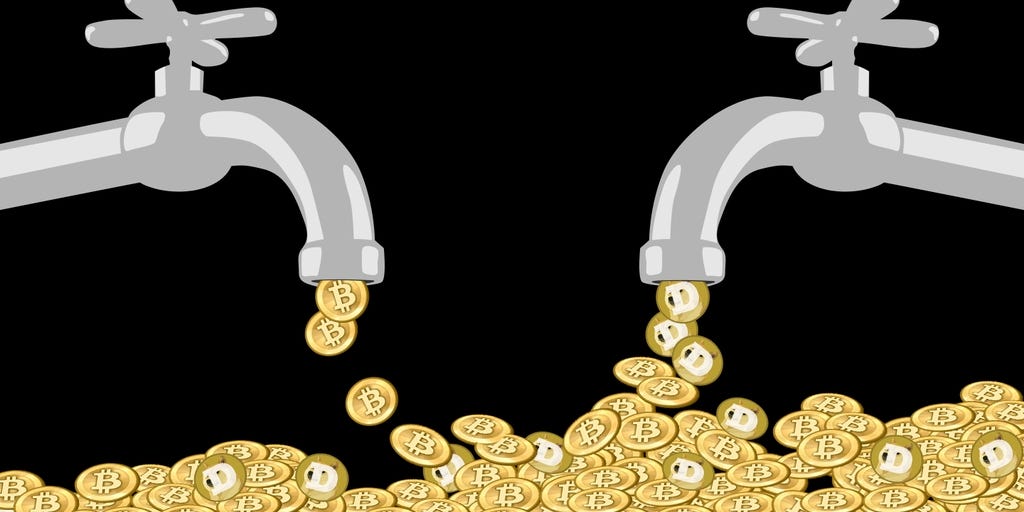How do faucets make money 2027-2028
How do faucets make money 2027-2028

Crypto faucets in 2027–2028 (just like today) make money primarily by monetizing user attention and traffic. Here’s how:
1. Advertising Revenue
- Primary income source.
- Faucets host display ads, pop-ups, or video ads.
- They earn money from:
- Impressions (CPM – cost per 1,000 views)
- Clicks (CPC – cost per click)
- Referral offers (CPA – cost per action)
The faucet gives users a tiny crypto reward to keep them clicking and generate ad revenue.
2. Affiliate Marketing / Referrals
- Users are shown referral links to exchanges, wallets, or games.
- Faucets earn a cut of fees or commissions from:
- Crypto trading platforms
- DeFi apps
- Casinos or gambling sites (common in shady faucets)
- NFT or gaming projects
3. Data Harvesting (Increasingly Risky)
- Some faucet operators gather user data (emails, IPs, wallet addresses).
- This info can be sold or used for targeted ads, airdrop farming, or identity profiling.
Less ethical — but still a revenue stream.
4. Ecosystem Grants or Token Promotions
- New chains or tokens pay faucet operators to:
- Distribute their token (seed adoption)
- Encourage early usage
- Example: An L2 project might fund a faucet to get users transacting on its testnet.
5. Yield Farming and Staking the Float
- Faucets usually hold a large reserve of crypto to drip out slowly.
- While this sits idle, they stake it, lend it, or farm yield on platforms like:
- Aave, Compound
- Lido, RocketPool
- DeFi yield optimizers
They earn interest on the float while slowly distributing small amounts.
Summary
By 2027–2028, crypto faucets will continue making money by blending:
- Ad revenue
- Referrals
- Ecosystem deals
- Financial arbitrage on held tokens
They thrive by giving users tiny incentives in exchange for time, attention, and data — much like ad-supported apps or freemium games.
Revenue Streams of High-Traffic Crypto Faucets
-
Advertising Revenue
-
Faucets display various ads, including:
-
Banner Ads: Static or dynamic images promoting products or services.
-
Video Ads: Short commercials that users watch to earn rewards.
-
Pop-up Ads: Advertisements that appear in new browser windows or tabs.
-
-
Revenue is generated through Cost Per Mille (CPM), Cost Per Click (CPC), and Cost Per Acquisition (CPA) models.
-
-
Affiliate Marketing
-
Faucets partner with crypto-related platforms (e.g., exchanges, wallets) and earn commissions when users sign up or perform specific actions through referral links.
-
-
Referral Programs
-
Users are incentivized to refer others by earning a percentage of their referrals’ earnings.
-
For instance, Cointiply offers a 25% referral bonus, and FreeBitco.in provides 50% of referral
-
-
Data Monetization
-
Some faucets collect user data (with consent) and sell it to third parties for targeted advertising or market research.
-
-
Yield from Staked Funds
-
Faucets may stake or lend out accumulated crypto holdings to earn interest or yield, further boosting their revenue.
-
Example: FreeBitco.in
-
Founded: 2013
-
User Base: Over 55 million registered users
-
Total BTC Distributed: More than 250,497 BTC
-
Earning Methods:
-
Hourly Claims: Users can claim free BTC every hour.
-
Dice Game: A casino-style game where users can gamble their earnings.
-
Referral Program: Earn 50% of referral earnings.
-
Jackpots: Weekly and monthly jackpot
-
Why Faucets Are Still Viable
-
User Acquisition: Faucets serve as an entry point for new users into the crypto ecosystem.
-
Engagement: They keep users engaged through gamified elements and regular rewards.
-
Monetization: The combination of ad revenue, affiliate marketing, and other streams ensures
RELATED KEY WORDS
What is the best crypto faucet?
What is a faucet in crypto?
Do crypto faucets work?
Are crypto faucets legal?
Can police track crypto?
How do I withdraw from Crypto faucet?
What is the fastest way to withdraw crypto?
How to transfer faucetpay to bank account?
How do I cancel crypto withdrawal?
Are crypto faucets profitable?
